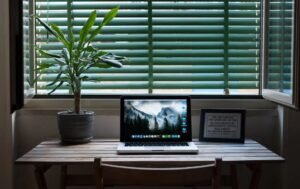Learn Generative Art
Generative art is a fascinating form of artistic expression that uses algorithms, randomness, and rules to create unique and ever-changing artworks. By combining computer programming with artistic design, generative artists can create awe-inspiring visuals that go beyond traditional art forms. In this article, we will explore the world of generative art, discuss its key concepts, and provide resources for you to start learning and creating your own generative artworks.
Key Takeaways
- Generative art combines computer programming with artistic design.
- Generative artworks are created using algorithms, randomness, and rules.
- Generative art provides a way for artists to create ever-changing and unique visuals.
- Learning generative art can be a rewarding and creative endeavor.
Generative art is all about exploring the creative possibilities presented by computer algorithms. *With generative art, every time you run the program*, you will get a different output, creating an infinite number of potential artworks.
Getting Started with Generative Art
If you’re new to generative art, it may seem intimidating at first. However, with the right resources and a bit of patience, you can dive into this exciting world. Here are some steps to get you started:
- Learn the basics of programming: Understanding programming fundamentals is crucial for creating generative art. *By having a solid foundation in programming*, you’ll be able to bring your artistic vision to life with code.
- Choose a programming language: There are various programming languages commonly used in generative art, such as Processing, p5.js, and Python’s Pygame module. *Selecting a language* that aligns with your goals and interests will make learning and creating easier.
- Explore generative art libraries and frameworks: The generative art community has developed numerous libraries and frameworks that simplify the process of creating generative art. Libraries like Paper.js and openFrameworks *provide powerful tools* to create stunning generative visuals.
Understanding Generative Art Concepts
To effectively create generative art, it’s essential to understand key concepts and techniques. These concepts will help you shape your artistic vision and guide you in creating unique artworks. Here are some fundamental concepts:
- Algorithms: Generative art relies on algorithms, which are sets of instructions that define how an artwork is generated. Algorithms can involve mathematical calculations, randomness, and rules.
- Randomness: Randomness plays a crucial role in generative art, allowing artists to introduce unpredictability and variety into their artworks. *By incorporating randomness*, artists can create endless possibilities.
- Rules and Constraints: Generative art often involves setting rules and constraints for the program. These rules can define the colors, shapes, or movements of the artwork, *providing structure and coherence*.
Further Resources for Learning
If you’re ready to dive deeper into generative art, there are many resources available for you to learn and expand your skills. Here are some recommended resources:
| Resource | Description |
|---|---|
| Generative Art: A Practical Guide | A comprehensive book that explores generative art concepts and provides hands-on coding examples. |
| Creative Coding: Processing and p5.js | An online course that teaches coding for generative art using the Processing and p5.js programming languages. |
*Remember, the journey of learning generative art is an ongoing process*. Don’t be afraid to experiment, explore, and push the boundaries of your creativity.
| Inspiring Generative Artists | |
|---|---|
| Name | Description |
| Kyle McDonald | A generative artist known for his interactive installations and creations that combine technology and art. |
| Vera Molnár | An influential pioneer of generative art, Molnár’s work explores mathematical and abstract concepts. |
Start Creating Your Own Generative Art
Now that you have an understanding of the key concepts and resources available, it’s time to start creating your own generative art. *Let your imagination soar* as you explore algorithms, randomness, and rules to bring your artistic vision to life.

Common Misconceptions
Generative Art is Just Random
One common misconception about generative art is that it is simply random. While generative art does involve elements of randomness and chance, it is not solely reliant on randomness. In fact, generative art is created using algorithms and rules that guide the generation of artistic output. It is a combination of logic, mathematics, and creativity.
- Generative art involves the use of constraints and rules.
- Artists can manipulate and control the parameters of the generative process.
- Generative art can produce complex and intricate patterns that are not simply random.
Generative Art is Easy to Make
Another misconception is that generative art is easy to create. While there are tools and software available that make it more accessible, creating meaningful and visually appealing generative art requires knowledge, skills, and artistic sensibility. It often requires an understanding of programming and mathematics, as well as experimentation and creative thinking.
- Creating generative art requires technical skills and knowledge in programming.
- Artists need to experiment and iterate to achieve desired results.
- Generative art requires a strong understanding of composition and aesthetics.
Generative Art is Not “Real” Art
Some people may dismiss generative art as not being “real” art, primarily because it is created using algorithms and software. However, generative art challenges traditional notions of art and creativity. It explores the intersection of technology and artistic expression, pushing the boundaries of what can be considered art.
- Generative art offers unique and innovative ways of artistic expression.
- Artists use their creativity to develop the algorithms and rules used in generative art.
- Generative art can provoke emotions and engage with viewers, just like any other form of art.
Generative Art is Only for Technically Skilled People
Many people believe that generative art is only accessible to those with advanced technical skills. While having some knowledge of programming and mathematics can certainly be helpful, anyone with an interest in art and creativity can learn generative art. There are various resources available, such as tutorials, online courses, and communities that can support beginners in learning and exploring generative art.
- Generative art can be learned and explored by artists of all skill levels.
- There are user-friendly tools and software available for creating generative art without extensive technical knowledge.
- Learning generative art can be a process of discovering and experimenting for artists with diverse backgrounds.
Generative Art is Only Abstract
While generative art often manifests in abstract forms, it is not limited to abstraction. Generative art can also take realistic or representational forms, depending on the artist’s intent and the algorithms used. It offers a wide range of possibilities for artistic expression, allowing artists to explore different styles and subject matters.
- Generative art can generate realistic or figurative images.
- Artists can combine elements of abstraction and representation in their generative art pieces.
- Generative art can depict various subjects, including landscapes, portraits, and still life.

Introduction
Generative art is a fascinating field that involves creating artwork using algorithms and computer code. It allows artists to explore unique and innovative ways to express their creativity. In this article, we will explore different aspects of generative art through ten captivating examples.
Evolution of Line Art
This table showcases the evolution of line art through different art movements and periods. From the precision of Renaissance drawings to the expressive and abstract lines of the Cubist era, it demonstrates the diverse styles and techniques employed by artists throughout history.
| Art Movement | Key Features |
|—————– |——————————– |
| Renaissance | Realistic, precise lines |
| Baroque | Dramatic and dynamic lines |
| Impressionism | Loose and free-flowing lines |
| Cubism | Geometric and abstract lines |
Colors Palette in Abstract Art
Abstract art is renowned for its bold and vibrant use of colors. This table explores the different color palettes commonly used in abstract artwork, showcasing their unique combinations and emotional effects.
| Color Palette | Description |
|—————– |————————————————– |
| Primary Colors | Intense and high-contrast combinations |
| Warm Colors | Radiate energy and evoke feelings of warmth |
| Cool Colors | Convey serenity and tranquility |
| Analogous Colors | Harmonious and closely related shades |
Shapes in Surrealism
Surrealist art often incorporates dreamlike and otherworldly elements. This table outlines the various shapes commonly found in Surrealist artworks, revealing their symbolic meanings and contributions to the overall composition.
| Shape | Symbolism |
|—————– |————————————— |
| Spiral | Transformation and journey |
| Cloud | Dreamlike and ethereal atmosphere |
| Clock | Time and the subconscious |
| Mirror | Reflection and the subconscious mind |
Techniques in Landscape Art
Landscape art captures the beauty of nature and showcases different artistic techniques. This table highlights various techniques employed by landscape artists and provides insights into how they bring life to their paintings.
| Technique | Description |
|——————–|—————————————– |
| Impasto | Thick, textured brushstrokes |
| Glazing | Layering translucent colors |
| Sgraffito | Scratching through layers to reveal underpainting |
| Wet-on-wet | Blending wet paint on a wet surface |
Geometry in Islamic Art
Islamic art is renowned for its intricate geometric patterns. This table demonstrates the diverse geometrical elements present in Islamic art and their symbolic representation.
| Geometric Element | Symbolism |
|———————-|———————————————- |
| Arabesque | Infinite and unending nature of God |
| Hexagon | Harmony and balance |
| Star and Crescent | Symbol of Islam and divine light |
Textures in Still Life Painting
Still life painting captures the beauty of everyday objects. This table illustrates the various textures that artists typically recreate in their still life artwork, providing a deeper understanding of their skill and attention to detail.
| Texture | Description |
|———————–|———————————————–|
| Smooth | Polished surfaces without visible texture |
| Rough | Jagged, uneven surfaces |
| Soft | Surfaces that appear plush and comfortable |
| Reflective | Mirror-like surfaces that reflect light |
Lighting Techniques in Portraiture
Portraiture relies heavily on lighting techniques to convey mood and enhance the subject’s features. This table explores different lighting techniques employed by portrait artists, shedding light on their creative choices.
| Lighting Technique | Description |
|———————–|———————————————–|
| Rembrandt lighting | Creating a triangular pattern of light on the face |
| High-key lighting | Soft, evenly distributed light without harsh shadows |
| Butterfly lighting | Casting a butterfly-shaped shadow under the nose |
Composition in Abstract Photography
Abstract photography offers a unique perspective on the world, capturing elements of reality in a non-representational way. This table highlights different compositional techniques used in abstract photography, offering insights into how photographers create visually captivating images.
| Composition Technique | Description |
|———————–|———————————————–|
| Rule of thirds | Dividing the frame into a 3×3 grid and placing points of interest at the intersecting lines |
| Leading lines | Using lines to guide the viewer’s gaze through the image |
| Symmetry | Creating a balanced composition through mirroring elements |
Pattern Variations in Textile Design
Textile design heavily relies on patterns, both traditional and contemporary. This table showcases different variations of patterns found in textile design, exemplifying the diversity and creativity of textile artists.
| Pattern Variation | Description |
|———————– |———————————————-|
| Floral pattern | Inspired by flowers and nature |
| Geometric pattern | Consisting of geometric shapes and designs |
| Abstract pattern | Non-representational and expressive designs |
| Paisley pattern | Intricate and curvaceous tear-drop shapes |
Conclusion
Generative art encompasses a vast array of styles, mediums, and techniques. Through these ten tables, we have explored various aspects of generative art, ranging from color palettes in abstract art to lighting techniques in portraiture. Each table reveals the diversity and intricacy within these artistic fields, encouraging us to appreciate the boundless possibilities of generative art. So, dive into this fascinating realm, experiment with algorithms, and let your creativity flow in the realm of generative art!
Frequently Asked Questions
What is generative art?
Generative art is a form of art that is created using algorithms and computer programs to generate artwork. It involves using rules, patterns, and parameters to create unique and often unpredictable visual or auditory output.
How does generative art differ from traditional art?
Unlike traditional art, generative art is created with the help of computer programming and algorithms. It is often dynamic and constantly evolving, as it can respond to input or change over time. Traditional art, on the other hand, is usually static and created by hand without the use of algorithms.
What are the benefits of learning generative art?
Learning generative art can provide a unique perspective on the creative process and allow individuals to explore new forms of expression. It can also improve programming skills, as it requires knowledge of coding and algorithms. Additionally, generative art can be used in various fields, such as graphic design, music, and interactive installations.
Do I need to have programming experience to learn generative art?
While having programming experience can be helpful, it is not a requirement to learn generative art. There are various tools and software that provide a user-friendly interface for creating generative art without extensive coding knowledge. However, learning the basics of programming can give you more control and flexibility in creating your generative artwork.
What are some popular programming languages for creating generative art?
Some popular programming languages for creating generative art include Processing, Python, JavaScript, and Max/MSP. These languages provide libraries and frameworks specifically designed for creating visual and interactive artwork.
Can generative art be created without computers?
While generative art is often associated with the use of computers, it is possible to create generative artwork without digital tools. Traditional methods such as drawing, painting, and sculpting can also incorporate generative techniques, such as using random or algorithmic processes to create unique patterns or compositions.
Are there any legal considerations when creating generative art?
As with any form of art, there are legal considerations to be aware of when creating generative art. It is important to respect copyright laws and obtain proper permissions when using existing artwork, photographs, or other copyrighted materials. Additionally, if your generative art involves using data or information obtained from others, it is crucial to ensure that you have the necessary rights and permissions to use that data.
Can generative art be monetized?
Yes, generative art can be monetized. Artists can sell their generative art pieces as digital downloads, prints, or even physical installations. Some artists also license their generative art for use in commercial projects, such as advertisements or album covers.
Where can I find resources and tutorials for learning generative art?
There are several online resources and tutorials available for learning generative art. Websites like Generative Artistry, Processing.org, and CreativeApplications.net offer tutorials, articles, and communities where you can learn and discuss generative art. Additionally, online learning platforms like Skillshare and Udemy also offer courses specifically focused on generative art.
What are some examples of famous generative artists?
Some examples of famous generative artists include Sol LeWitt, who pioneered the use of algorithms and instructions for creating art, and Vera Molnár, who explored geometric patterns and algorithms in her artwork. Other notable generative artists include Casey Reas, Joshua Davis, and Marius Watz.




